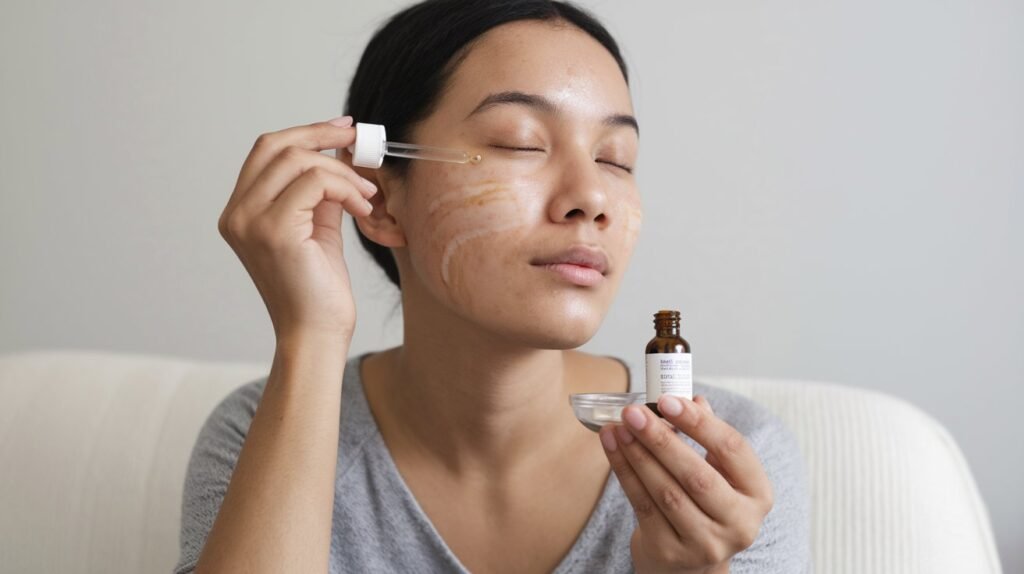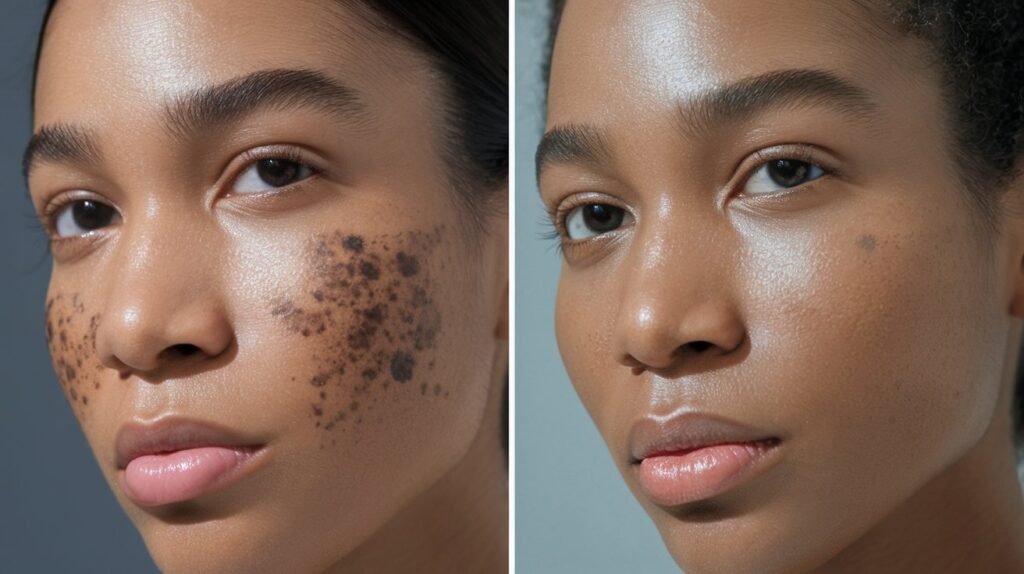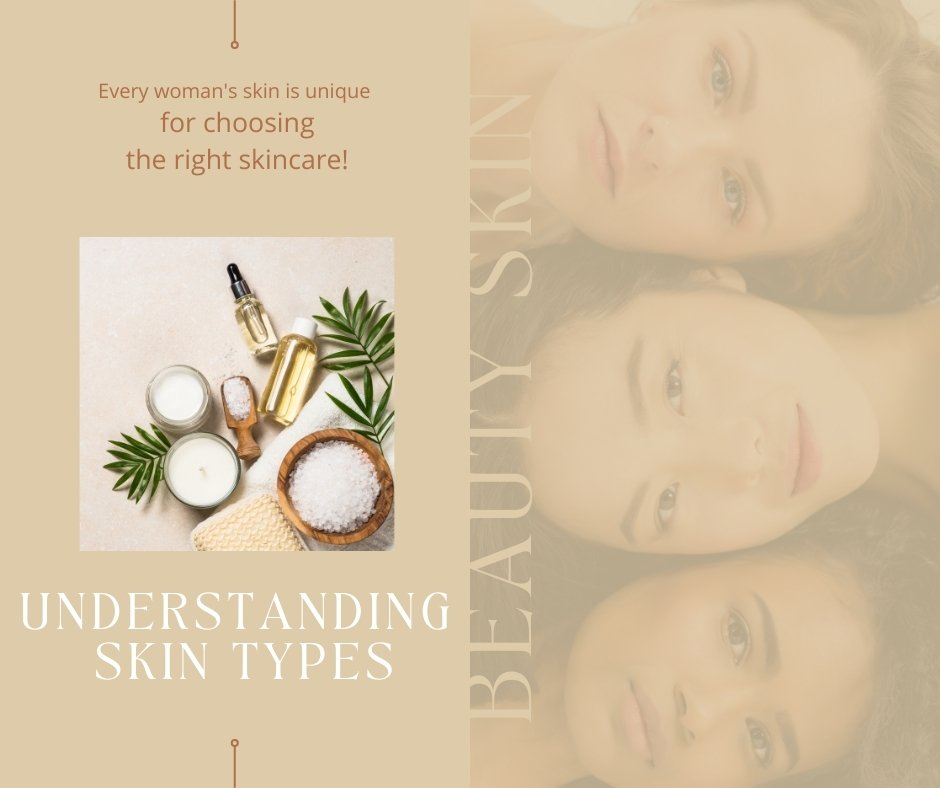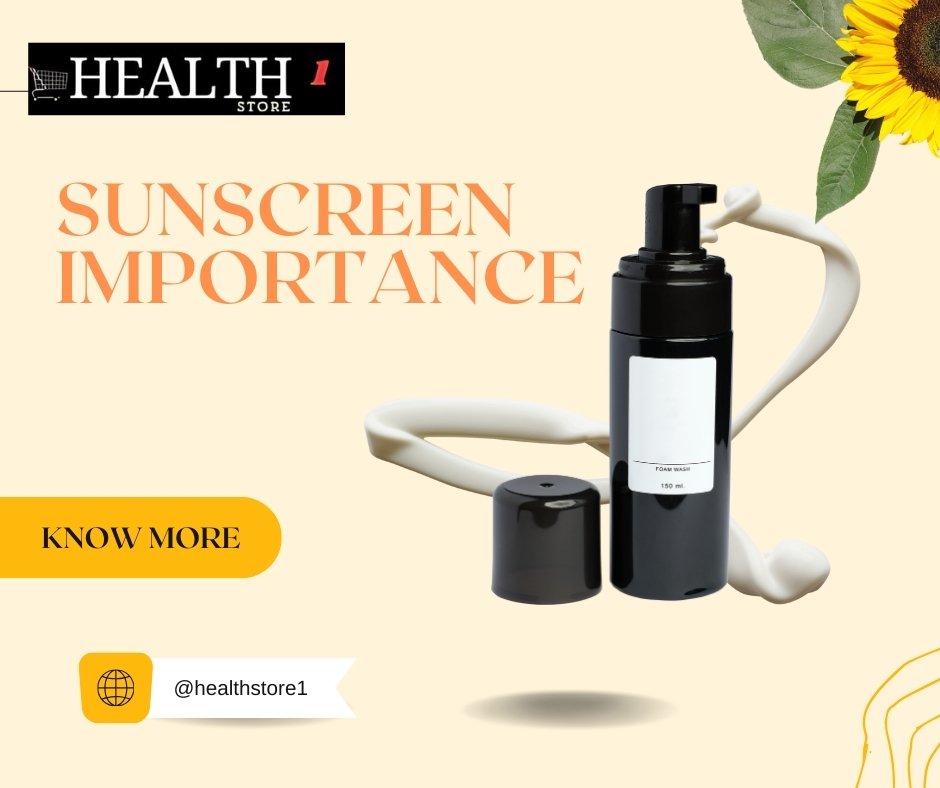Introduction
Hyperpigmentation stands out as a common yet often misunderstood concern. Have you ever noticed dark spots or uneven skin tone that seem to appear out of nowhere? If so, you’re not alone. Many individuals grapple with this condition, which can stem from various factors such as sun exposure, hormonal changes, and even certain medications. Understanding hyperpigmentation is crucial not only for those affected but also for anyone interested in maintaining healthy, radiant skin.
As we delve into the intricacies of hyperpigmentation, we will explore its different types, causes, and effective treatment options. Are you curious about how lifestyle choices and skincare routines can play a pivotal role in managing this condition? We’ll cover the importance of identifying your skin type and concerns, as well as the best practices for prevention and treatment.
Moreover, we will discuss the latest advancements in skincare treatments that target hyperpigmentation, from topical solutions to professional procedures. Whether you’re seeking to brighten your complexion or simply want to understand this skin condition better, our comprehensive guide will provide you with valuable insights and practical advice. Join us on this journey to uncover the secrets behind hyperpigmentation and empower yourself with knowledge that can lead to healthier skin.
Table of Contents
Understanding Hyperpigmentation
Hyperpigmentation is a term that often sparks curiosity and concern. But what exactly does it mean? In simple terms, it refers to the darkening of certain areas of the skin due to excess production of melanin, the pigment responsible for our skin color. You might wonder, “Is this something I should worry about?” The answer varies from person to person, but understanding the nuances of hyperpigmentation can empower you to take control of your skin health.

What Are the Different Types of Hyperpigmentation?
Hyperpigmentation isn’t a one-size-fits-all condition. It manifests in several forms, each with its own causes and characteristics. Here are the most common types:
- Melasma
Often referred to as “the mask of pregnancy,” melasma typically appears as brown or gray-brown patches on the face, particularly on the cheeks, forehead, and upper lip. Hormonal changes, such as those experienced during pregnancy or with birth control use, can trigger melasma. Have you noticed these patches appearing during significant life changes? - Sun-Induced Pigmentation
Also known as sunspots or age spots, these are flat brown or black spots that develop due to prolonged sun exposure. They often appear on areas frequently exposed to sunlight, such as the face, hands, and shoulders. Are you diligent about wearing sunscreen? If not, it might be time to rethink your sun protection strategy! - Post-Inflammatory Hyperpigmentation (PIH)
This type occurs after skin injury or inflammation, such as acne scars or cuts. If you’ve ever had a breakout that left a dark mark behind, you’ve experienced PIH firsthand. It’s a reminder that our skin is resilient but also sensitive.
What Causes Hyperpigmentation?
Understanding the root causes of hyperpigmentation can help you address it more effectively. Here are some common culprits:
- Genetic Factors: Some people are more predisposed to hyperpigmentation due to their genetic makeup. If your family members have struggled with dark spots, you may be at risk too.
- Environmental Triggers: Sun exposure is a significant factor in developing hyperpigmentation. UV rays stimulate melanin production, leading to dark spots over time. Pollution and harsh weather can also contribute to uneven skin tone.
- Hormonal Changes: Fluctuations in hormones—especially during pregnancy or while taking oral contraceptives—can trigger melasma.
- Medications: Certain medications can increase sensitivity to sunlight or affect melanin production, leading to pigmentation changes.
Diagnosing Hyperpigmentation
If you’re noticing changes in your skin tone and wondering if it’s hyperpigmentation, it’s essential to consult a dermatologist for an accurate diagnosis. They can help determine the type of hyperpigmentation you have and suggest appropriate treatment options tailored to your specific needs.
Why Understanding Hyperpigmentation Matters
By familiarizing yourself with hyperpigmentation, you’re taking the first step toward healthier skin. Knowledge is power! Whether you’re looking to prevent new spots from forming or seeking effective treatments for existing ones, understanding the different types and causes will guide your skincare journey.
In our next section, we’ll dive deeper into identifying various types of hyperpigmentation and how they can affect your skin health. Stay tuned as we uncover more insights that will help you navigate this common yet complex condition!
Identifying Different Types of Hyperpigmentation
As we continue our journey through the world of hyperpigmentation, it’s essential to recognize that not all dark spots are created equal. Understanding the various types of hyperpigmentation can help you identify your specific concerns and tailor your skincare approach accordingly. So, how can you distinguish between the different forms? Let’s break it down!
Common Types of Hyperpigmentation
- Melasma
Melasma is often characterized by large, symmetrical patches of dark skin, typically found on the face. It’s most common in women, especially during pregnancy or when using hormonal contraceptives. Have you noticed these brownish spots appearing on your cheeks or forehead? Melasma can be triggered by sun exposure and hormonal changes, making sun protection crucial for prevention. - Sun-Induced Pigmentation (Solar Lentigines)
Often referred to as age spots or liver spots, these flat brown or black spots develop due to prolonged sun exposure over the years. They usually appear on areas frequently exposed to sunlight, such as the face, hands, and shoulders. If you’ve spent a lot of time in the sun without adequate protection, you might have noticed these spots forming. Remember, prevention is key—sunscreen is your best friend! - Post-Inflammatory Hyperpigmentation (PIH)
PIH occurs after an injury or inflammation to the skin, such as acne scars or eczema flare-ups. Have you ever experienced a breakout that left a dark mark behind? That’s PIH in action! This type of hyperpigmentation can affect anyone but is particularly common among individuals with darker skin tones. - Freckles
Freckles are small, flat brown spots that often appear on the face and arms due to genetic factors and sun exposure. They’re more common in fair-skinned individuals and tend to darken with sun exposure. Do you have freckles that become more pronounced in the summer? While they are generally harmless, some people may choose to lighten them for cosmetic reasons.
Diagnosing Hyperpigmentation
Identifying the type of hyperpigmentation you have is crucial for effective treatment. Here are some steps to help you diagnose your condition:
- Observe Your Skin: Take note of where the dark spots are located and their shape and size. Are they symmetrical like melasma or irregular like PIH?
- Consider Your History: Reflect on any recent skin injuries or hormonal changes that may have triggered pigmentation changes.
- Consult a Dermatologist: If you’re unsure about your diagnosis, a dermatologist can provide a thorough examination and recommend appropriate treatments based on your specific type of hyperpigmentation.
Why Identifying Hyperpigmentation Matters
Understanding the type of hyperpigmentation you’re dealing with not only helps in choosing the right treatment but also empowers you to take proactive steps in your skincare routine. For example, if melasma is your concern, focusing on sun protection and hormonal balance might be essential strategies for you.
In our next section, we’ll explore effective treatment options for hyperpigmentation tailored to each type discussed here. Whether you’re looking for topical solutions or professional treatments, we’ve got you covered! Stay tuned as we dive deeper into reclaiming your skin’s natural radiance!
Treatment Options for Hyperpigmentation
If you’re grappling with hyperpigmentation, you might be feeling overwhelmed by the myriad of treatment options available. The good news is that there are effective solutions tailored to your unique skin needs. Whether you prefer over-the-counter products or professional treatments, understanding your options can help you regain your skin’s natural radiance. So, what are the best ways to tackle hyperpigmentation? Let’s explore!

Topical Treatments
Topical therapies are often the first line of defense against hyperpigmentation. These creams and serums can help lighten dark spots and even out skin tone. Here are some popular ingredients to look for:
- Hydroquinone: This powerful skin-lightening agent is often prescribed for treating hyperpigmentation. It works by inhibiting melanin production, but it’s essential to use it under a dermatologist’s guidance due to potential side effects.
- Vitamin C: Known for its antioxidant properties, vitamin C not only brightens the skin but also protects it from environmental damage. Incorporating a vitamin C serum into your routine can yield noticeable improvements over time.
- Retinoids: Products containing retinoids, such as tretinoin, promote cell turnover and help fade dark spots. They can be particularly effective for post-inflammatory hyperpigmentation.
- Kojic Acid: Derived from fungi, kojic acid is another effective ingredient that inhibits melanin production and can be found in various creams and serums.
- Niacinamide (Vitamin B3): This versatile ingredient helps improve skin texture and reduce the appearance of dark spots while enhancing overall skin health.
Professional Treatments
For those seeking faster results or dealing with more severe cases of hyperpigmentation, professional treatments can provide significant benefits:
- Chemical Peels
Chemical peels involve applying a solution to the skin that exfoliates the top layers, revealing fresher, less pigmented skin underneath. Depending on your skin type and concerns, your dermatologist may recommend different types of peels, such as glycolic acid or salicylic acid peels. - Laser Therapy
Laser treatments target specific areas of hyperpigmentation with precision. Two common types include:
- Ablative Lasers: These remove the outer layer of skin, making them effective for deeper pigmentation issues but requiring longer recovery times.
- Non-Ablative Lasers: These stimulate collagen production without damaging the outer layer of skin, making them suitable for various skin types.
- Microneedling
This innovative treatment uses fine needles to create micro-injuries in the skin, stimulating collagen production and allowing topical treatments to penetrate deeper. Microneedling can effectively reduce dark spots and improve overall skin texture. - Intense Pulsed Light (IPL) Therapy
IPL therapy uses broad-spectrum light to target pigmentation in the skin. It’s particularly effective for sun-induced pigmentation and can also improve skin texture and tone.
Home Remedies
If you prefer a gentler approach or want to complement professional treatments, consider these natural remedies:
- Licorice Extract: Known for its soothing properties, licorice extract can help lighten dark spots and reduce inflammation.
- Turmeric: This golden spice contains curcumin, which has anti-inflammatory properties and may help brighten the skin when used in masks or topical applications.
- Rosehip Oil: Rich in vitamins A and C, rosehip oil can promote healing and help fade pigmentation over time.
Prevention is Key
While addressing existing hyperpigmentation is essential, prevention should also be part of your strategy. Daily sunscreen application is non-negotiable! Protecting your skin from UV rays not only prevents new spots from forming but also safeguards your overall skin health.
With so many treatment options available for hyperpigmentation, there’s no need to feel discouraged. Whether you choose topical solutions or professional interventions, understanding your choices empowers you to take action against dark spots. Always consult with a dermatologist before starting any new treatment regimen to ensure it aligns with your specific needs and goals.
In our next section, we will discuss how to prevent hyperpigmentation effectively through lifestyle changes and skincare routines. Stay tuned as we continue our journey toward achieving clear and radiant skin!
Preventing Hyperpigmentation
When it comes to hyperpigmentation, prevention is just as important as treatment. After all, wouldn’t you rather keep dark spots at bay than have to deal with them later? By adopting a proactive approach to your skincare routine and lifestyle choices, you can significantly reduce your risk of developing hyperpigmentation. So, how can you protect your skin and maintain an even complexion? Let’s dive into some effective strategies!
1. Sun Protection: Your Best Defense
The sun is one of the primary culprits behind hyperpigmentation. UV rays can trigger melanin production, leading to dark spots and uneven skin tone. Here’s how to shield your skin:
- Use Sunscreen Daily: Choose a broad-spectrum sunscreen with an SPF of 30 or higher. Apply it generously on all exposed skin, even on cloudy days or during winter months.
- Reapply Regularly: Sunscreen wears off over time, especially if you’re sweating or swimming. Reapply every two hours, or more frequently if you’re active outdoors.
- Wear Protective Clothing: Long sleeves, wide-brimmed hats, and UV-blocking sunglasses can provide additional protection against harmful rays.
- Seek Shade: Whenever possible, stay in the shade during peak sun hours (10 AM to 4 PM) when UV radiation is strongest.
2. Skincare Routine Essentials
Your daily skincare routine plays a crucial role in preventing hyperpigmentation. Here’s what to include:
- Gentle Cleansing: Use a mild cleanser to avoid irritating your skin. Harsh cleansers can lead to inflammation, which may trigger post-inflammatory hyperpigmentation.
- Incorporate Antioxidants: Products containing antioxidants like vitamin C and E help protect your skin from environmental damage and reduce the risk of pigmentation changes.
- Moisturize Regularly: Keeping your skin hydrated supports its barrier function and helps prevent irritation that could lead to dark spots.
- Exfoliate Wisely: Regular exfoliation can improve skin texture and promote cell turnover. However, be careful not to over-exfoliate; stick to gentle chemical exfoliants like AHAs or BHAs a few times a week.
3. Lifestyle Modifications
Making certain lifestyle changes can also contribute to healthier skin and lower your risk of hyperpigmentation:
- Stay Hydrated: Drinking plenty of water helps maintain skin elasticity and overall health. Aim for at least eight glasses a day!
- Eat a Balanced Diet: Incorporate foods rich in antioxidants, such as berries, leafy greens, nuts, and fish. A diet high in vitamins and minerals supports skin health from the inside out.
- Manage Stress: High stress levels can lead to hormonal fluctuations that may trigger melasma or other forms of hyperpigmentation. Consider practicing mindfulness techniques such as yoga or meditation to keep stress in check.
4. Be Cautious with Skin Treatments
While treatments like chemical peels and laser therapy can be effective for existing hyperpigmentation, they can also increase sensitivity to the sun. If you’re undergoing any procedures:
- Follow Post-Treatment Care Instructions: Always adhere to your dermatologist’s aftercare recommendations to minimize the risk of new pigmentation issues.
- Avoid Sun Exposure: Protect your skin diligently after treatments until it has fully healed.
Preventing hyperpigmentation is all about being proactive with your skincare routine and lifestyle choices. By prioritizing sun protection, maintaining a balanced skincare regimen, and making healthy lifestyle adjustments, you can significantly reduce your risk of developing dark spots. Remember, consistency is key!
In our next section, we’ll explore how to manage existing hyperpigmentation effectively and discuss the emotional impact it can have on self-esteem. Stay tuned as we continue our journey toward achieving clear, radiant skin!
Living with Hyperpigmentation
Living with hyperpigmentation can be a journey filled with both challenges and triumphs. If you’ve found yourself feeling self-conscious about dark spots or uneven skin tone, you’re not alone. Many people experience these concerns, and understanding how to manage them can make a significant difference in your confidence and overall well-being. So, how can you navigate life with hyperpigmentation while embracing your unique beauty? Let’s explore some practical strategies and insights.

Understanding the Emotional Impact
First and foremost, it’s essential to acknowledge the emotional toll that hyperpigmentation can take. You might find yourself feeling frustrated or even embarrassed by your skin. Have you ever avoided social situations or felt less confident because of your appearance? These feelings are valid, and recognizing them is the first step toward empowerment.
- Self-Acceptance: Embracing your skin as it is can be liberating. Remember that everyone has imperfections, and they don’t define your worth. Consider practicing positive affirmations or surrounding yourself with supportive friends who uplift you.
- Seek Support: Connecting with others who share similar experiences can be incredibly helpful. Online forums or local support groups provide a safe space to share stories, tips, and encouragement.
Managing Expectations with Treatment
If you’re actively seeking treatment for hyperpigmentation, it’s important to manage your expectations. While many treatments can significantly improve the appearance of dark spots, results often take time. Here are some tips to help you stay motivated:
- Be Patient: Understand that fading hyperpigmentation is a gradual process. It may take weeks or even months before you notice significant changes.
- Track Your Progress: Consider taking photos of your skin at regular intervals to visually document improvements. This can help you stay motivated and see how far you’ve come.
- Consult Professionals: Regular check-ins with a dermatologist can provide guidance on your treatment plan and help adjust it as needed for optimal results.
Skincare Routine for Confidence
A consistent skincare routine tailored to your needs can boost your confidence and improve the appearance of hyperpigmentation. Here are some key components to consider:
- Gentle Cleansing: Start with a mild cleanser that won’t irritate your skin. Avoid harsh scrubs that could exacerbate pigmentation issues.
- Targeted Treatments: Incorporate serums with ingredients like vitamin C, niacinamide, or retinoids into your regimen to help brighten dark spots effectively.
- Moisturization: Keeping your skin hydrated is essential for maintaining its barrier function and overall health, which can help reduce the risk of further pigmentation.
- Sun Protection: Daily sunscreen application is crucial! Not only does it prevent new spots from forming, but it also protects existing ones from becoming darker.
Embracing Your Unique Beauty
Ultimately, living with hyperpigmentation is about embracing who you are—flaws and all. Here are some ways to celebrate your uniqueness:
- Experiment with Makeup: If you enjoy makeup, consider using products designed to even out skin tone without feeling heavy. Lightweight foundations or tinted moisturizers can provide coverage while allowing your natural beauty to shine through.
- Focus on Other Features: Shift your attention to features you love! Whether it’s your eyes, hair, or smile, celebrating different aspects of yourself can enhance your overall confidence.
- Educate Others: Use your experience as an opportunity to educate friends and family about hyperpigmentation. Raising awareness can foster understanding and support from those around you.
Living with hyperpigmentation may come with its challenges, but it also offers opportunities for growth and self-discovery. By managing expectations, adopting a tailored skincare routine, and embracing your unique beauty, you can navigate this journey with confidence and grace. Remember, your worth is not defined by the appearance of your skin!
In our next section, we’ll explore the latest trends in skincare that address hyperpigmentation and how advancements in technology are shaping treatment options. Stay tuned as we continue our exploration of achieving radiant skin!
The Latest Trends in Skincare That Address Hyperpigmentation
As the beauty industry evolves, so do the solutions for tackling hyperpigmentation. With a growing focus on inclusivity and effectiveness, innovative trends are emerging that cater to diverse skin types and concerns. Are you curious about what’s new in the world of hyperpigmentation treatments? Let’s explore some of the most exciting trends that are shaping the future of skincare!
1. Hybrid Products
One of the standout trends in 2024 is the rise of hybrid products that combine skincare benefits with traditional beauty treatments. These innovative formulations not only address hair removal but also target uneven skin tone and hyperpigmentation. Imagine a product that helps you achieve smooth skin while simultaneously fading dark spots! Here’s why hybrid products are gaining traction:
- Fewer Steps: Instead of layering multiple products, hybrid options provide a streamlined approach, saving you time in your skincare routine.
- Effective Ingredients: Many hybrid products incorporate active ingredients like vitamin C and niacinamide, which are known for their brightening properties.
- Convenience: Perfect for those with busy lifestyles, these products simplify your regimen without compromising on results.
2. Advanced Sunscreens
With sun exposure being a primary trigger for hyperpigmentation, the demand for effective sunscreens has never been higher. In 2024, we’re seeing a surge in high-quality sunscreens that not only protect against UV rays but also offer additional skincare benefits:
- White Cast-Free Formulas: Many new sunscreens are designed to be lightweight and invisible on the skin, making them suitable for all skin tones.
- Clean Ingredients: Consumers are increasingly seeking clean and organic sunscreen options that are free from harmful chemicals while providing ample protection.
- Enhanced Protection: Look for sunscreens infused with antioxidants to combat free radicals and help prevent pigmentation caused by environmental stressors.
3. Ingredient Innovations
The quest for effective ingredients to combat hyperpigmentation is continuously evolving. In 2024, several new and improved ingredients are making waves:
- Melasyl: Recently launched by L’Oréal, this proprietary ingredient targets localized pigmentation issues such as age spots and post-acne marks. It works across all skin tones to improve the appearance of dark spots.
- Cosmelan and Dermamelan: These professional-grade treatments inhibit melanin production and are gaining popularity for their effectiveness in treating various forms of hyperpigmentation.
- Neuroglow: This innovative ingredient mimics sun exposure by boosting melanin production naturally. It’s designed to prepare the skin for sun exposure while promoting a healthier tan without the harmful effects of UV rays.
4. Non-Invasive Treatments
The demand for non-invasive treatments continues to grow as people seek effective solutions without downtime. Here are some popular options:
- Laser Therapy: Technologies like fractional lasers and picosecond lasers are becoming more accessible and effective in treating hyperpigmentation. These lasers break down pigmented lesions while stimulating collagen production, resulting in improved skin texture.
- Intense Pulsed Light (IPL): IPL treatments use controlled pulses of light to target pigmentation at various depths in the skin, making them suitable for all skin types.
- LED Light Therapy: This gentle treatment can help reduce inflammation and promote healing, making it an excellent option for those with post-inflammatory hyperpigmentation.
5. Comprehensive Post-Care Treatments
Post-care is just as important as the treatment itself when it comes to managing hyperpigmentation. Salons and dermatologists are revamping their post-care techniques to ensure optimal results:
- Gentle Chemical Exfoliants: Products containing alpha or beta hydroxy acids help promote cell turnover and minimize hyperpigmentation after treatments.
- Soothing Ingredients: Post-care routines often include calming agents like chamomile or aloe vera to reduce inflammation and support healing.
The landscape of skincare addressing hyperpigmentation is rapidly changing, offering exciting new solutions that cater to diverse needs. From hybrid products that simplify your routine to advanced sunscreens and innovative ingredients, there’s no shortage of options to help you achieve an even complexion. As you explore these trends, remember that consistency is key—finding the right combination of products and treatments tailored to your unique skin will lead you on the path toward radiant skin!
In our next section, we’ll summarize our journey through understanding hyperpigmentation and highlight key takeaways for maintaining healthy skin. Stay tuned as we wrap up this insightful exploration!
Conclusion
As we wrap up our exploration of hyperpigmentation, it’s clear that understanding this common skin condition is the first step toward managing it effectively. Have you discovered new insights about your skin and the various factors that contribute to dark spots? From recognizing the different types of hyperpigmentation to exploring the latest treatment trends, we’ve covered a lot of ground together.
Living with hyperpigmentation can be challenging, but it doesn’t have to define your self-esteem or your beauty. By adopting a proactive skincare routine that includes effective sun protection, targeted treatments, and a commitment to healthy lifestyle choices, you can take charge of your skin’s health. Remember, consistency is key! Have you considered how small daily habits can lead to significant improvements over time?
The advancements in skincare technology offer hope and solutions for those struggling with hyperpigmentation. Whether you choose topical treatments, professional therapies, or innovative hybrid products, there are options available that cater to your unique needs. It’s all about finding what works best for you—and don’t hesitate to consult with a dermatologist for personalized advice.
As you continue your journey toward radiant skin, keep in mind that embracing your unique beauty is just as important as any treatment. Each freckle or dark spot tells a story of your experiences and resilience. So, celebrate your skin and the journey it represents!
Thank you for joining us on this informative journey through hyperpigmentation. We hope you feel empowered with knowledge and ready to take the next steps toward achieving a clear and even complexion. Remember, beautiful skin is not just about appearance; it’s about feeling confident and comfortable in your skin. Here’s to embracing our unique beauty together!
References
- Skincare for Hyperpigmentation | The INKEY List: The INKEY List.
- Dermatologist’s Guide to Body Hyperpigmentation Treatment: Prequel Skin.
- The 11 Top Ingredients for Hyperpigmentation: Miiskin [3].
- Managing Facial Hyperpigmentation in Skin: PMC.
- Cosmeceuticals for Hyperpigmentation: PMC.




